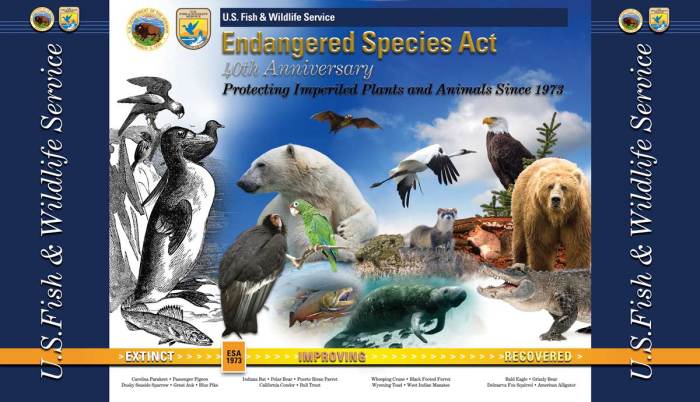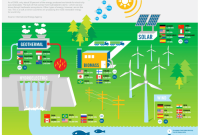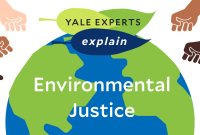The Endangered Species Act (ESA) stands as a critical safeguard for our planet’s most vulnerable creatures. This comprehensive legislation has played a pivotal role in preventing countless species from disappearing forever, ensuring their survival for generations to come.
Introduction: The Power of the ESA
Enacted in 1973, the ESA is a landmark piece of environmental legislation in the United States. Its primary mission is to protect and conserve species facing extinction due to human activities like habitat destruction, pollution, and overexploitation. The Act’s rigorous criteria for listing species as endangered or threatened, coupled with its robust enforcement mechanisms, have proven instrumental in reversing the decline of many iconic species.
A Rich History and Lasting Significance
The ESA’s history is marked by amendments and revisions, with significant updates in 1982, 1988, and 2016. These enhancements solidified the Act’s position as one of the most effective pieces of environmental legislation globally. The success stories are numerous: the majestic bald eagle, the elusive California condor, and many others have all been brought back from the brink thanks to the ESA’s protections. The Act also plays a crucial role in safeguarding critical habitats and regulating activities that could jeopardize these species.
Protecting Species Under the Act
The ESA establishes clear criteria for listing species as endangered or threatened, providing federal protection to those at imminent risk of extinction.
- Endangered: In imminent danger of extinction throughout all or a significant portion of its range.
- Threatened: Likely to become endangered within the foreseeable future.
Numerous species have found protection under the ESA, including:
- California Condor (Gymnogyps californianus)
- Florida Panther (Puma concolor coryi)
- Northern Spotted Owl (Strix occidentalis caurina)
- Black-footed Ferret (Mustela nigripes)
Listing and Delisting: A Dynamic Process
The process of listing and delisting species involves several steps:
- Petition: A petition is submitted to the U.S. Fish and Wildlife Service (USFWS) or the National Marine Fisheries Service (NMFS), providing evidence of a species’ declining status.
- Review: The agency reviews the petition to determine if a listing is warranted.
- Listing: If justified, the species is proposed for listing and undergoes a public comment period.
- Delisting: A species may be delisted if it recovers sufficiently to no longer be considered endangered or threatened.
The ESA provides a vital safety net for at-risk species, ensuring their conservation and potential recovery.
Enforcement and Penalties
The ESA is enforced by various federal agencies, including the USFWS and NMFS. These agencies have the authority to investigate violations, issue citations, and impose penalties. Violations can be costly, with criminal penalties reaching up to $50,000 in fines and imprisonment for up to a year. Civil penalties can also be significant, with fines of up to $25,000 per violation. Additionally, violators may be required to compensate for any damages caused to endangered species or their habitats.
Compliance and Cooperation
Compliance with the ESA is essential for protecting endangered species. Individuals and businesses can play a crucial role by following the law and reporting any observed violations. Cooperation between government agencies, landowners, and all stakeholders is vital for the Act’s effective implementation. Working together, we can ensure endangered species have a chance to recover and thrive.
Challenges and Controversies
The ESA has faced challenges and controversies throughout its implementation. These include:
- Balancing species protection with economic interests.
- Dealing with scientific uncertainties surrounding species conservation.
- Navigating the legal complexities of the Act.
While the ESA is critical for preserving biodiversity, it’s important to acknowledge these challenges.
- Balancing Act: Implementing the Act can impose restrictions on land use and development, impacting industries like logging, mining, and agriculture. This has led to conflicts between conservationists and landowners, sparking debates about appropriate compensation for economic losses.
- Scientific Uncertainties: Predicting the impacts of human activities on species populations can be complex, and scientific data might be limited. This can lead to disagreements regarding the appropriate level of protection for specific species.
- Legal Complexities: The ESA is a complex legal document, resulting in numerous lawsuits and legal challenges. Varying interpretations of its provisions and ongoing debates about the scope of its protections and the balance with other societal interests create further complexities.
Potential Solutions
Several solutions have been proposed to address these challenges:
- Developing more effective economic incentives to encourage landowners to conserve species.
- Investing in scientific research and monitoring to reduce uncertainties in species conservation.
- Clarifying the legal provisions of the ESA to reduce ambiguity and facilitate consistent implementation.
- Promoting collaboration and consensus
International Collaboration and Conservation:
The ESA doesn’t operate in isolation. It plays a crucial role in international conservation efforts by fostering partnerships and agreements with other countries to protect endangered species. This collaboration allows for:
- Exchange of Information: Sharing scientific data, technical expertise, and financial resources to support conservation initiatives on a global scale.
- Expanded Scope: By uniting efforts beyond national borders, international cooperation enhances the effectiveness of species protection measures, addressing threats to migratory species across their entire range.
The ESA works alongside several key international agreements:
- Convention on International Trade in Endangered Species of Wild Fauna and Flora (CITES): Ensuring the regulation of international trade in endangered species and their products.
- International Union for Conservation of Nature (IUCN): Collaborating to assess the conservation status of species and develop recovery plans.
- Inter-American Convention for the Protection and Conservation of Sea Turtles: Supporting efforts to protect sea turtles and their nesting habitats throughout the Americas.
Global collaboration is essential because many endangered species have migratory patterns that span continents. This unified approach allows for coordinated conservation efforts, increasing the likelihood of species recovery. By sharing resources, expertise, and best practices, countries can amplify the effectiveness of conservation measures and foster a sense of shared responsibility for protecting the world’s biodiversity.
Economic and Social Impacts: Striking a Balance
The ESA has significant economic and social implications, impacting various industries and communities.
Economic Considerations:
- Regulations and Costs: The Act’s regulations can impose costs on industries, particularly those reliant on land use and development. Restrictions on activities that could harm protected species may limit economic growth in certain areas.
- Conservation Opportunities: However, the ESA also creates opportunities for industries specializing in conservation and sustainable practices, promoting a shift towards a more sustainable future.
Social Considerations:
- Community Impacts: Species protection can have social implications, particularly for communities that rely on certain species for cultural or economic purposes. Restrictions on hunting, fishing, or other activities can impact livelihoods and traditional practices.
- Public Awareness and Education: The ESA also promotes public awareness and education, fostering a sense of stewardship and appreciation for endangered species. This fosters a more informed and engaged citizenry actively participating in conservation efforts.
Finding a balance between conservation and human activities is key. The ESA requires careful consideration of the economic and social implications of protecting endangered species while ensuring their survival and preserving biodiversity for future generations.
Public Education and Outreach: Fostering a Culture of Conservation
Public education and outreach play a pivotal role in the protection of endangered species. By raising awareness and fostering support for conservation efforts, these initiatives empower the public to become active participants in preserving biodiversity.
Here are some key strategies:
Outreach Programs:
- Educational Campaigns: Educate the public on the importance of endangered species, the threats they face, and how individual actions can contribute to their protection. Promote an understanding of the ecological roles endangered species play and the consequences of their loss.
- Workshops and Training: Provide practical skills and knowledge to professionals, community groups, and individuals involved in species conservation. This fosters collaboration and the exchange of best practices, empowering participants to implement effective conservation measures in their communities.
Citizen Science Projects:
- Public engagement in data collection and monitoring efforts is crucial. Citizen science projects contribute valuable data to scientific research and conservation planning. They provide opportunities for the public to learn about endangered species and their habitats while contributing directly to conservation science. This fosters a sense of stewardship and community involvement in species protection.
Inspiring Success Stories: A Testament to the ESA’s Power
The Endangered Species Act’s effectiveness is evident in the numerous species brought back from the brink of extinction. Here are a few inspiring examples:
- The American Bald Eagle: Once critically endangered, the bald eagle has made a remarkable recovery thanks to the ESA. Habitat protection, pesticide bans, and conservation programs have resulted in a population increase from less than 500 breeding pairs in the 1960s to over 10,000 today.
- The California Condor: This magnificent bird faced severe decline due to habitat loss, lead poisoning, and hunting. Through captive breeding programs, habitat restoration, and reintroduction efforts, the California condor population has gradually recovered, with over 500 individuals soaring through the skies once more.
- The Black-Footed Ferret: Once thought to be extinct, the discovery of a small population in Wyoming in 1981 sparked a successful recovery effort. Captive breeding and reintroduction programs have established multiple populations, demonstrating the resilience of species with proper conservation measures.
- The Florida Manatee: Habitat protection, boat speed restrictions, and public education campaigns have contributed significantly to the recovery of the Florida manatee population. These gentle marine mammals are now




